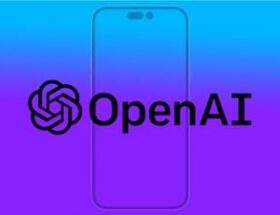Tim Hardwick
In iOS 18.2, Apple introduced ChatGPT integration with Apple Intelligence to enhance your iPhone’s AI capabilities in several ways. When enabled, Siri can use ChatGPT to make complex requests about photos and documents, and the integration also extends to Writing Tools for composing text and images, while Visual Intelligence helps you identify objects and places using your iPhone’s camera.

You don’t need a ChatGPT account to get started, but signing up for a free or paid ChatGPT account unlocks additional features and more frequent access to advanced capabilities. This guide explains how to set up and get the most out of these new features. Please note that to use Apple Intelligence features in iOS 18.2, you must have an iPhone 15 Pro or iPhone 16 model.
Setting up ChatGPT in iOS 18.2
If you have Apple Intelligence enabled, setting up the optional ChatGPT integration only takes a few steps, and you can get started even without a ChatGPT account. You can always start with the basic setup and upgrade to a connected account later if needed (though you may never need to—more on that below).
- Open Settings.
- Tap Apple Intelligence & Siri.
- Under Extensions, tap ChatGPT.
- Turn on the toggle next to Use ChatGPT.
If you have a ChatGPT account (free or paid), you can optionally sign in from this final screen using your account credentials. One of the benefits of this is that it allows you to save the history of your chats and return to them later in the ChatGPT app or website.
Remember, you don’t need an account to use ChatGPT with Siri — it’s completely free, but you may eventually reach OpenAI’s daily limits for the advanced features, which use the latest GPT-4o model. Once those limits are reached, the system switches to Basic mode for 24 hours. While it hasn’t been confirmed, Basic mode likely uses OpenAI’s mini-model of GPT-4o, which processes most common queries faster, but the answers you get may be less detailed. However, in our tests, we didn’t find much of a difference between the two in everyday iPhone use.
Once you enable the ChatGPT extension, Siri automatically figures out when to use ChatGPT to provide more accurate answers to your queries. However, you can control whether Siri asks you before sending any information to ChatGPT by toggling the switch next to Confirm ChatGPT requestsin the Chat GPT extension settings menu. Note that Siri will always ask for permission before sending a file to ChatGPT.
Apple, ChatGPT, and Your Privacy
Apple says that when you use the ChatGPT extension without signing in, only your request and any attachments, such as documents or photos, are sent to ChatGPT to process your request. OpenAI does not receive any information associated with your Apple account, and your IP address remains hidden. Only your general location is shared.
OpenAI does not store your requests or their responses, and your data will not be used to improve or train their models. Your ChatGPT account settings and OpenAI's data privacy policies will only apply if you choose to sign in.
Siri Integration
The combination of Siri and ChatGPT easily expands the capabilities of the voice assistant beyond what you’re used to. The integration works well for complex requests that involve problem solving, spelling help, detailed explanations, and step-by-step instructions. You’ll find that the responses are more detailed and contextual than Siri’s default capabilities.
Siri will analyze each request to determine if a response is required from ChatGPT, but you can specify that you want to use ChatGPT by simply starting your Siri request with “ChatGPT.” This actually opens up a lot more integration possibilities. For example, you can ask ChatGPT to generate an image based on a prompt, and it will use Dall-E to do the heavy lifting. Better yet, the results tend to outperform Apple’s Image Playground. You can save the resulting image using the Save button in the upper-right corner of the output card.
Pro tip: If you query ChatGPT in Messages and ask it to generate an image, it will even place the image in a text field ready to share in a conversation.
You can also ask ChatGPT a question about something on your screen, and Siri will offer to send a screenshot to ChatGPT, or the full content as a file if it’s a long document.
You can use the Copy button in the upper-right corner of the scrolling reply box to copy the output to your clipboard.
Also, you can save helpful replies by calling Siri and saying “Save this to my Notes,” which gives you a searchable archive of your conversations in Notes that is saved after they’re finished. This is especially useful if you’re not signed into ChatGPT and can’t get back to your account to view your chat history.
ChatGPT can be used with Siri, but it also integrates with Writing Tools and Visual Intelligence. With Writing Tools, ChatGPT can generate text, and with Visual Intelligence, ChatGPT can answer questions about what the camera sees. We’ll look at those specific integrations next.
ChatGPT and Writing Tools
With the introduction of ChatGPT integration in iOS 18.2, Writing Tools has a new Compose option. This lets you describe what you want to write, and ChatGPT will create it for you.
But Compose doesn’t limit you to just text suggestions. If you look in the text input field, there’s a + button. Tapping this button opens options to upload a file or image on your iPhone to ChatGPT so the chatbot can reference it as part of your request. After generating a response, you will also see additional suggested queries from ChatGPT in the Compose panel.
Compose isn’t limited to creating text from files or images stored on your iPhone. For example, if you’re in Notes, you can select the text that ChatGPT will work with or have it reference all the text in a note. You’ll also see these options in a tappable menu above the Compose input field.
ChatGPT’s Compose feature can be used almost anywhere on your iPhone where you can access writing tools like Notes, Messages, and Safari, as well as third-party apps that support Apple’s Intelligence feature set.
ChatGPT and Visual Intelligence
Visual Intelligence is an iPhone 16 feature that uses the camera control button located on the lower right side of the device. If you long press it, you can enter Visual Intelligence mode, which can use the Camera app to identify what's around you.
For example, if you point the camera at an object or take a photo of it, you can press the Ask Me button and ChatGPT will analyze what's in the viewfinder to identify the object. If the output doesn't answer your question, you can continue it by typing it into the ChatGPT input field. This can be useful for getting more information about just about anything in your home or when you're out and about.
Future Chatbot Extensions for iOS
There have been reports of future Apple Intelligence integrations with AI-powered chatbots like Google's Gemini and Anthropic's Claude, though there have been no official announcements yet. However, Apple software chief Craig Federighi said in June that he would like to see Gemini integration happen at some point.
According to Bloomberg's Mark Gurman, Apple may hold off on integrating Google's Gemini until next year to give OpenAI a window of exclusivity, especially since Apple isn't paying for the technology. However, it's unclear whether Gemini's arrival will coincide with the iOS 18 update in the spring or whether it will be introduced as part of the iOS 19 release cycle later next year.
83 comments










